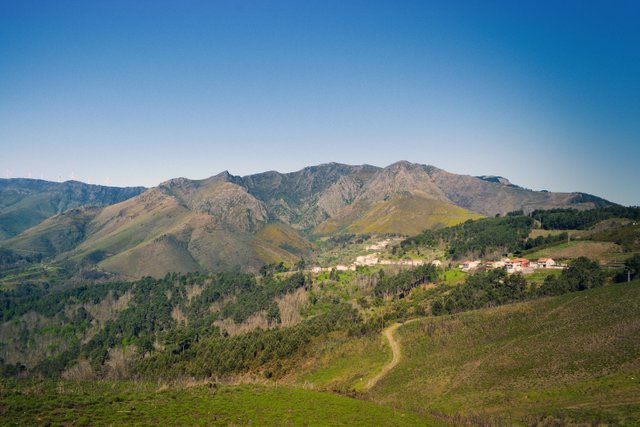Italy Community
✅1708 | The Assault by the Privateer Duguay-Troüin on the Town of Velas
At the end of the 17th century, significant gold and diamond deposits were discovered in Brazil. Their intensive exploitation gave rise to a new phase of Portuguese expansion, in which the fleets from Brazil became more important than the fleets of the India Run.
Gold dust, bullion, and coin, as well as sugar, timber, tobacco, and animal hides, were brought annually to Portugal by Brazilian fleets, which departed from Rio de Janeiro, Pernambuco, and Bahia under the escort of military ships.
At the beginning of the 18th century, Europe was experiencing great political instability, leading to the War of the Spanish Succession. In this conflict, Portugal allied with England and the Dutch Republic against France. It was in this context that René Duguay-Troüin, the famous French privateer from Saint-Malo, appeared in the Azores.
In the winter of 1707–1708, Duguay-Troüin requested ships from King Louis XIV to lie in wait and attack the Brazil fleet as it passed the Azores on its return voyage to Portugal. He later wrote, "I revealed this to no one, for its success depended on absolute secrecy."
With the king's support, a fleet was prepared that departed from Brest on July 27, 1708. It consisted of eleven ships armed with a total of 460 cannons, eight of which were ships of the line—Lys, Saint-Michel, Achille, Dauphiné, Jason, Gloire, Amazone, and Astrée.
Knowing that an allied naval force of seven ships was waiting to escort the Brazil fleet to Lisbon, Duguay-Troüin’s fleet sailed toward the Azores "out of sight of the islands," their inhabitants, and the allied ships, so that neither the locals nor their enemies would know of their presence. They took up position about fifteen leagues west of the Azorean islands.
However, the wait was very long, and supplies and water began to run low. Under these circumstances, Duguay-Troüin decided to resupply by heading toward the Central Group of the Azorean archipelago.
While sailing in the São Jorge Channel, he sighted "a port at the end of which was a rather beautiful town"—this was the town of Velas, and it was there that he decided to land.
In his Memoirs, published posthumously, Duguay-Troüin does not mention that on the first landing attempt, on September 19, his men were repelled by the local population, led by Sergeant Major Amaro Soares de Sousa.
"After passing between the islands of Faial, Pico, and São Jorge, I noticed, while passing by the latter, a port at the end of which was a rather beautiful town and some forts dominating the bay. This place seemed very suitable for my purpose, so I had all our boats prepared, loaded with seven hundred soldiers under the command of the Count of Arquien, my immediate officer, with orders to land and take control of the town. Before the boats departed, I ordered a false attack on the other side of the bay to draw some of the islanders away."
Only on the following day, with the landing of 700 men, did the French achieve their objective. The population had retreated to the hills above Velas to seek refuge in the island’s interior, while the French occupied the town and brought ashore many barrels to be filled with water. At the same time, they took everything they could find in the locals’ storehouses—mainly provisions, wheat, and wine.
However, a strong and unexpected storm arose in the São Jorge Channel, prompting Duguay-Troüin to order his men to re-embark immediately and for the ships to leave their anchorages, avoiding the risk of being driven onto the coast.
Many barrels were left behind, but during the five days the French remained in Velas, they not only fulfilled their main resupply needs but also looted the churches and the homes of the town’s wealthier residents. The storm caused Duguay-Troüin’s ships to become scattered, forcing them to abandon their plan to attack the Brazil fleet. They returned to the French coast instead.
The Brazil fleet passed through the Azores eight days after the French had left and arrived in Lisbon on November 1.
This expedition by Duguay-Troüin was a major failure. As he himself noted, “my brother and I lost a good part of our small fortune,” and the shipowners of Saint-Malo refused to continue financing or participating in his privateering ventures.
However, Duguay-Troüin’s glory came later, in September 1711, when he resisted Portuguese artillery and entered Rio de Janeiro’s bay, conquering and looting the city. He returned to Brest with the spoils, which included over a ton of gold.

I am sharing photos of landscapes, moments and experiences. Nature and sea are the most visited themes in my photo collection, but any attention-grabbing aspect can be photographed. Hope you enjoy it...
| Category | #italy |
| Photo taken at | Marão - Portugal |

)
Upvoted! Thank you for supporting witness @jswit.
Downvoting a post can decrease pending rewards and make it less visible. Common reasons:
Submit